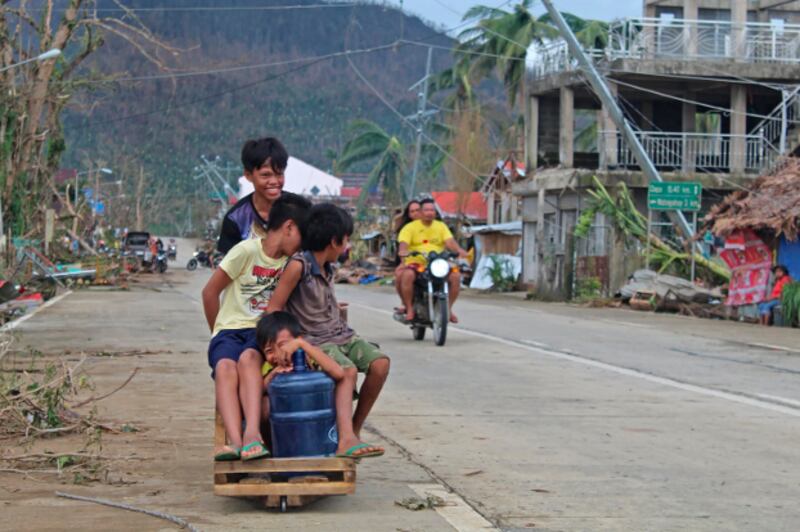Updated at 11 a.m. ET on 2021-12-19
The death toll in the Philippines from Super Typhoon Rai passed 140 on Sunday as an official reported 74 in his central province alone, and authorities warned the figure could climb higher.
In addition to at least 142 deaths confirmed, 10 people were reported missing and 13 were injured as a result of torrential rain and heavy winds from Rai, known locally as Odette.
Arthur Yap, governor of Bohol province, said “42 of of 48 local government units have already reported as of Dec. 19, 2021, and their breakdown indicates that there were 74 deaths so far.
“Reports are partial as communication lines are still down. This is the first time in Bohol’s history to experience a severe typhoon at signal four, so massive destruction really happened,” Yap said, noting that the deaths were verified by the provincial health department and local government units.
The state meteorological agency (PAGASA) uses a five-signal warning system with signal one the least dangerous and signal five the worst.
“We cannot survive the next two to three weeks by just waiting for transmission lines to be repaired. This being the case, I am asking for your help to urgently source 15 horsepower single-phase generators so we can distribute them to Bohol’s 48 local officials for the use of their local water refilling stations,” Yap said in a public appeal.
Odette, the 15th storm this year, dumped heavy rain and brought strong winds over large areas around the eastern seaboard of Mindanao in the southern portion of the country. It sliced through the Philippines, reaching super typhoon status by Thursday while ripping roofs from homes, felling trees and toppling power lines.
While Bohol was the focus of operations on Sunday, rescuers were struggling to reach other devastated areas.
Cagayan de Oro city in the south as well as the surfing paradise of Siargao island, where the storm made landfall Thursday, were heavily hit as well. Tourists trapped on the island were asking the government’s help for sea travel so they could go home.
In Manila, acting presidential spokesman Karlo Nograles said President Rodrigo Duterte had ordered all government assets be used to expedite relief and rehabilitation efforts.
“The president’s directive is to use all government resources to ensure that all goods are delivered as soon as possible,” he said. “My message to those affected by Typhoon Odette: The government is doing everything it can.
“As the whole government acts with dispatch to assist typhoon-affected areas and residents, we call on everyone to pray for those who perished, those who are still missing and those who got injured for their swift recovery. Let us all extend kindness, generosity and compassion to the people who are in need,” he said.

15.9 million
The International Federation of Red Cross and Red Crescent said assessment efforts were hampered by the lack of access to many of the affected areas.
“Initial estimated number of people living in the affected areas is 15.9 million, of which 9.1 million people are in the worst-affected areas,” it said.
Richard Gordon, a senator who serves as the Philippine Red Cross chairman, said about 36,000 families in 720 evacuation centers were being assisted by their agency.
In November 2013, more than 6,500 people died or were missing after Super Typhoon Haiyan walloped the central Philippines, causing massive storm surges that inundated coastal communities.
Haiyan was the strongest storm to make landfall in the Philippines, and five years later many areas are feeling the long-term effects of the devastation.
Mark Navales in Cotabato, Philippines, and Dennis Jay Santos in Davao, Philippines, contributed to this report.
